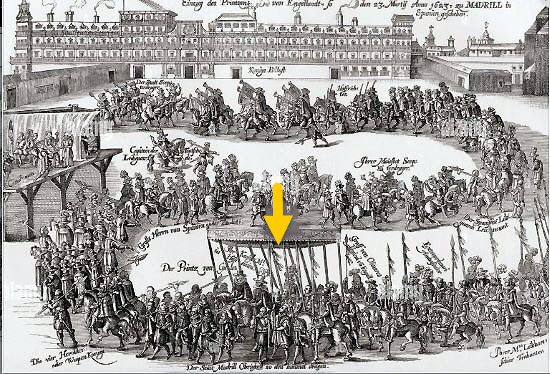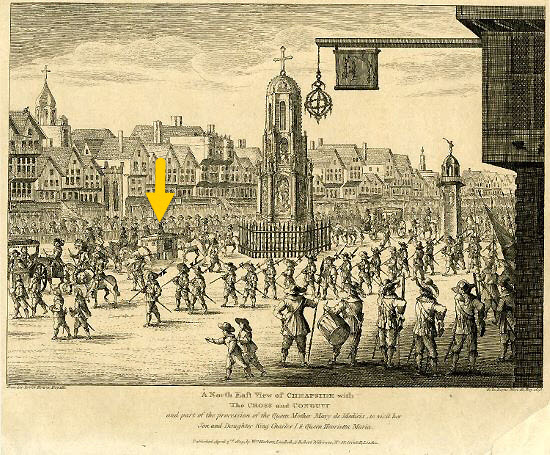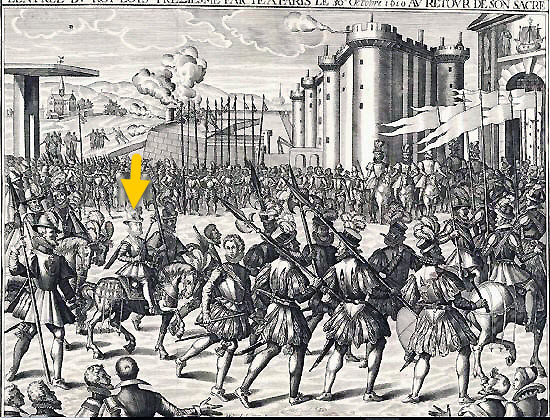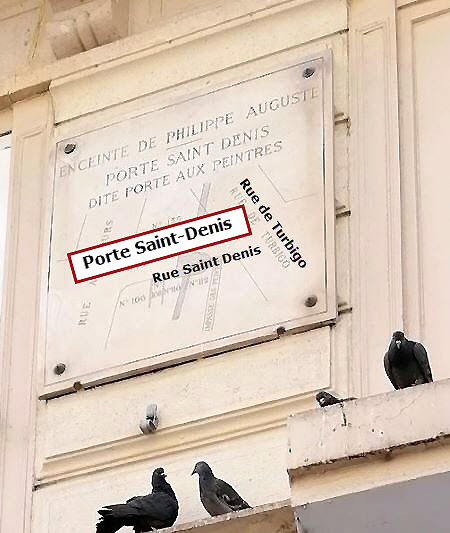MENU: 2.3.3.b. The street of royal power
KINGS MARCHED DOWN RUE SAINT-DENIS FOR "JOYOUS ENTRIES," AND COURTIERS MARCHED UP IT TO ENTOMB THEM
The monarchy's most opulent street retains traces of grandeur.
Entry of Louis XI to Paris by Francis Tattegrain, 1889-90 / zoom
For more images and a text (in French), please click.
In brief
- Processions to unite kings and subjects
- France's exceptional number of royal entry images...
- Parading down rue Saint-Denis
- Royal funeral processions take the route in reverse
- The vanished gate
- Beyond the gate, the royal gibet
- Public executions, demonstrations of power
- Executioners, indispensable pariahs
- Now street that is pleasant and pedestrian
* * *








































